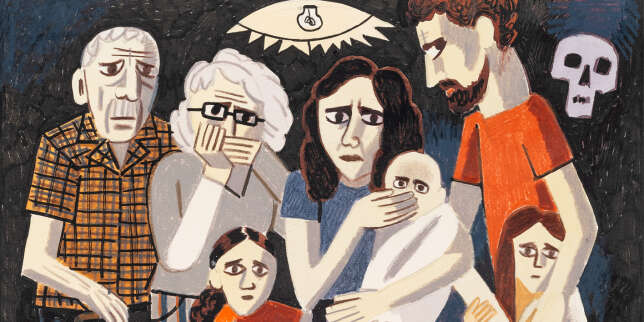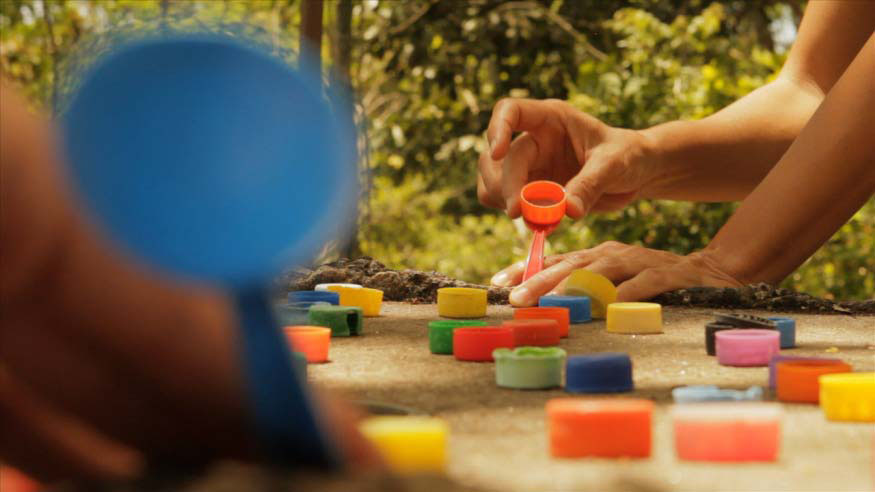Life ’64
2016 - Photography (Photography)
57 7/10 x 45 1/10 inches
José Castrellón
Palo Enceba’o is a project by José Castrellón composed of three photographs, two drawings on metal, and a video work that creates a visual and cultural analogy between the events of January 9th, 1964 in Panama City and the game of palo encebado carried out in certain parts of Panama to celebrate the (US-backed) independence from Colombia. In the game, young men climb a wood post smeared with animal wax to collect a Panamanian flag in return for a bounty. During what is now remembered as Martyrs’ Day, Panamanian students trespassed the fence that separated the American-governed strip of land along the Panama Canal and Panama City to fly a flag and symbolically claim sovereignty over the area that had been turned over to the United States by the Hay–Bunau-Varilla Treaty in 1903. Effectively, the treaty allowed for the construction of the canal and its use in perpetuity by the US in exchange for a sum of money and the backing of Panama’s independence from Colombia. Dubbed as a threat to the sovereignty of the Canal Zone, the American military shot and killed several of the students involved in the incident (declared martyrs) which escalated the already tense relationship between the countries and eventually aided in the negotiations of the Torrijos-Carter Treaties that returned the Canal Zone to Panama. The image of the students climbing up a light post is likened to the palo encebado game. Through the appropriation of a photograph by Stan Weymann published on the cover of TIME Magazine in January 1964 and two original images, the series Palo enceba’o speaks of the ambiguity of the notion of sovereignty.
José Castrellón works with photography, video, found material and language, moving between the conceptual and documentary realms. Through research, he takes history as a point of departure to inquire into and express anthropological and sociological concerns. He identifies with cultural changes and the impact they have on different places, the cultural modification of people and society, as well as the physical transformation of landscapes, brought about by commercialism, colonialism, geopolitical conflict, and interventions. Castrellón practice is concerned with diffusion, hybridization, and exposure to different cultural forms and their imposition, appropriation, or cannibalism, which emerge on the faces of people or the nature of spaces.
Colors:
Other related works, blended automatically
» see more

© » KADIST
José Castrellón
2016Palo Enceba’o is a project by José Castrellón composed of three photographs, two drawings on metal, and a video work that creates a visual and cultural analogy between the events of January 9th, 1964 in Panama City and the game of palo encebado carried out in certain parts of Panama to celebrate the (US-backed) independence from Colombia...
Related works sharing similar palette
» see more

© » KADIST
Ashmina Ranjit
2020While most of Ashmina Ranjit’s work has been large-scale installations, often immersive and site-specific, the series Hair Warp – Travel Through Strand of Universe is a brilliant concentration of both her beliefs and aesthetic...

© » LE MONDE
Au Musée juif de New York, requiem expressionniste pour les victimes du 7 octobre nav_close_menu Cet article vous est offert Pour lire gratuitement cet article réservé aux abonnés, connectez-vous Se connecter Vous n'êtes pas inscrit sur Le Monde ? Inscrivez-vous gratuitement Article réservé aux abonnés « Oct...

© » HYPERALLERGIC
Artist Rodrigo Valenzuela’s Futuristic Ruins Unveiled in LA Skip to content Rodrigo Valenzuela, "The Underpinning" (2023) (photo Matt Stromberg/ Hyperallergic ) LOS ANGELES — On Saturday afternoon, a crowd gathered at Los Angeles State Historic Park on the edge of Chinatown for the opening of Rodrigo Valenzuela’s new public artwork, commissioned by the local nonprofit Clockshop...

© » THEARTNEWSPER
Podcast | The Year in Review 2023: the biggest stories and the best shows | The Week in Art Art market Museums & heritage Exhibitions Books Podcasts Columns Technology Adventures with Van Gogh Search Search The Week in Art podcast The Year in Review 2023: the biggest stories and the best shows From the British Museum thefts to the consequences in art and heritage of the Israel-Hamas war Sponsored by Hosted by Ben Luke ...
Other works by: » José Castrellón
» see more

© » KADIST
José Castrellón
2016Palo Enceba’o is a project by José Castrellón composed of three photographs, two drawings on metal, and a video work that creates a visual and cultural analogy between the events of January 9th, 1964 in Panama City and the game of palo encebado carried out in certain parts of Panama to celebrate the (US-backed) independence from Colombia...

© » KADIST
José Castrellón
2016Palo Enceba’o is a project by José Castrellón composed of three photographs, two drawings on metal, and a video work that creates a visual and cultural analogy between the events of January 9th, 1964 in Panama City and the game of palo encebado carried out in certain parts of Panama to celebrate the (US-backed) independence from Colombia...
Related works found in the same semantic group
» see more

© » KADIST
Donna Conlon and Jonathan Harker
2012In Tapitapultas (2012), Donna Conlon and Jonathan Harker comment on mass consumerism and pollution by way of a game they invented...

© » KADIST
Fred Wilson
2009Fred Wilson’s flag paintings document the 20th century history of African people, indexing the period of liberation from colonialism...

© » KADIST
Natasha Wheat
2011Natasha Wheat’s Kerosene Triptych (2011) is composed of three images, one each from the digital files of the Library of Congress, the Smithsonian Institution, and the Field Museum tropical research archive...

